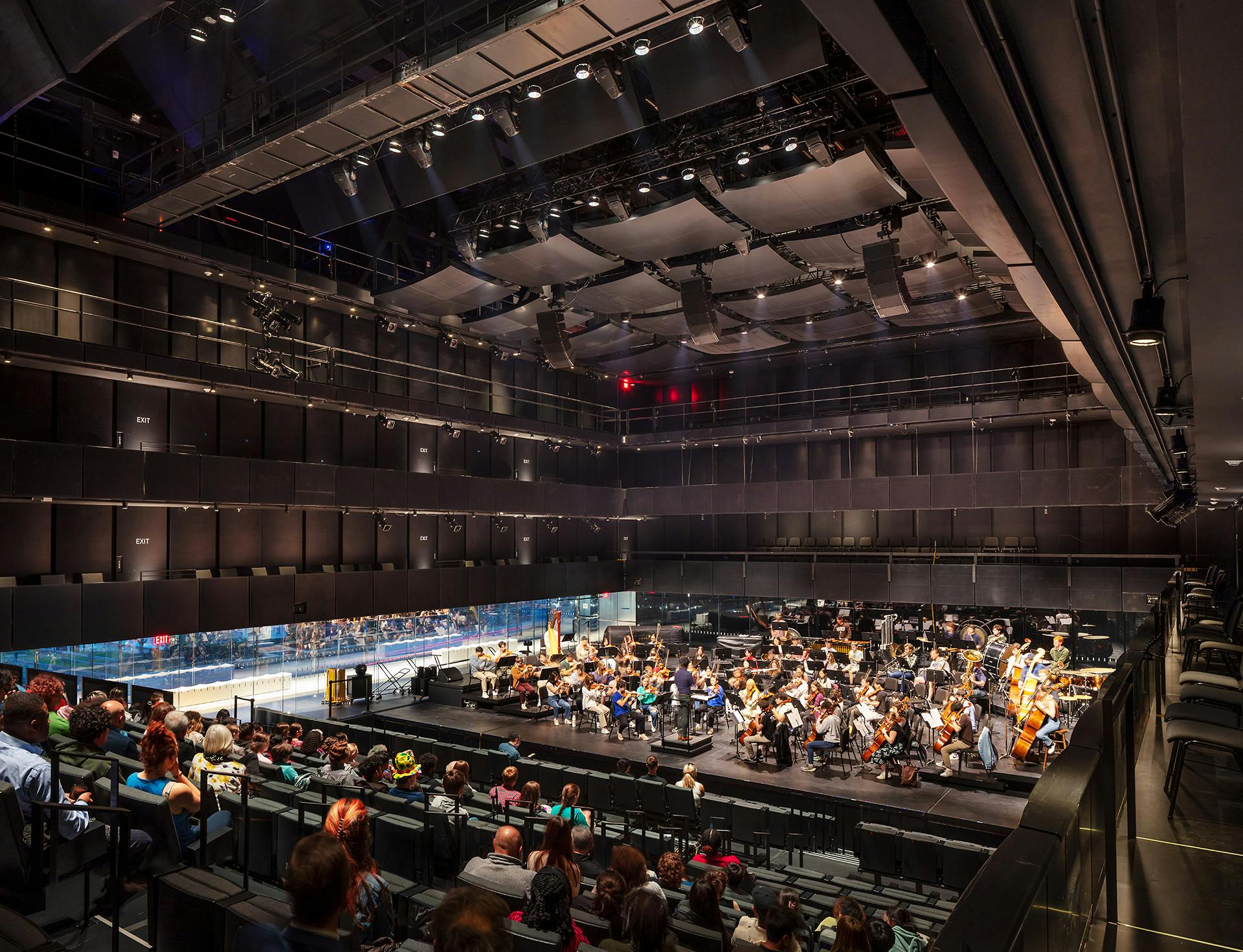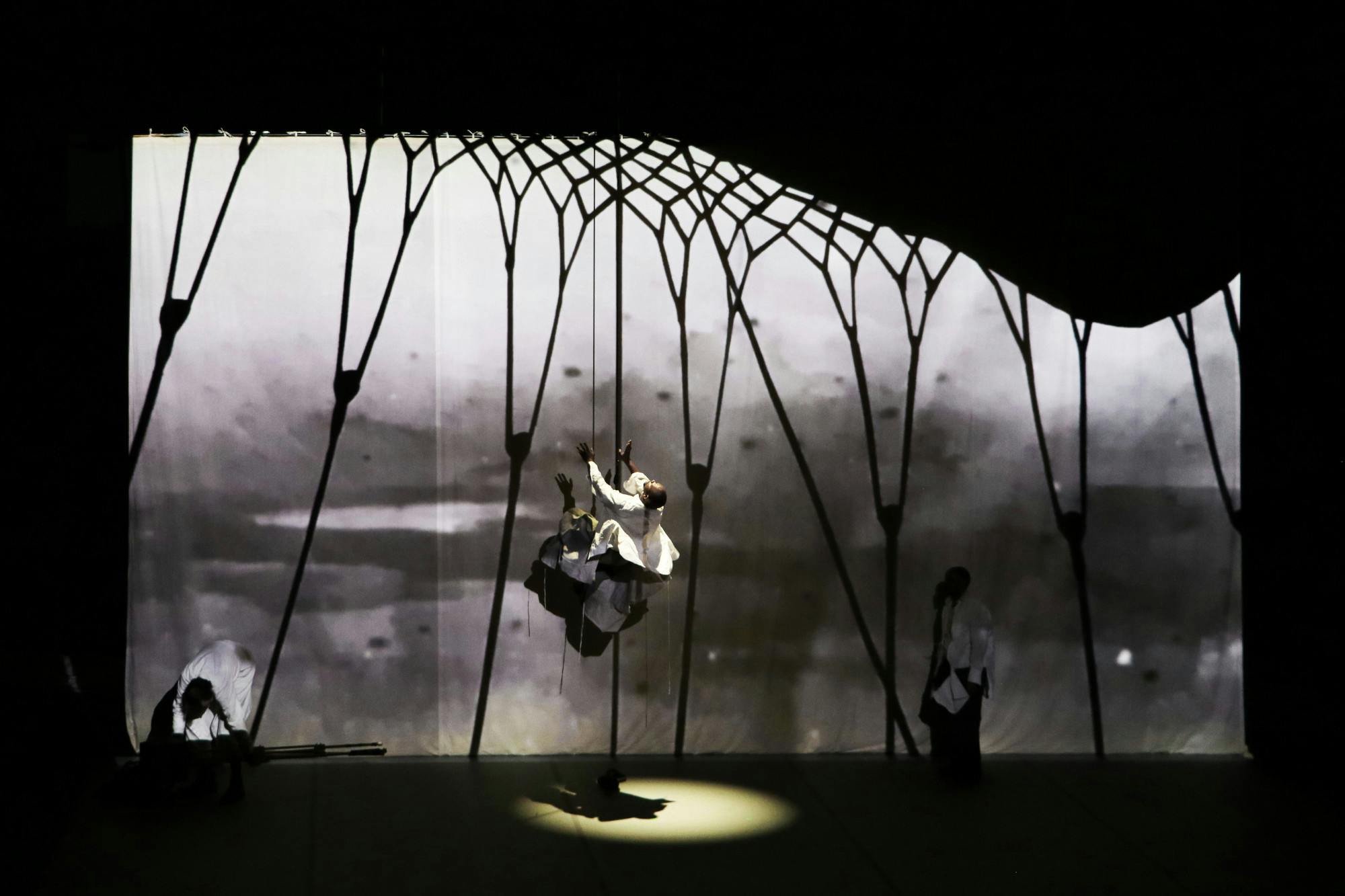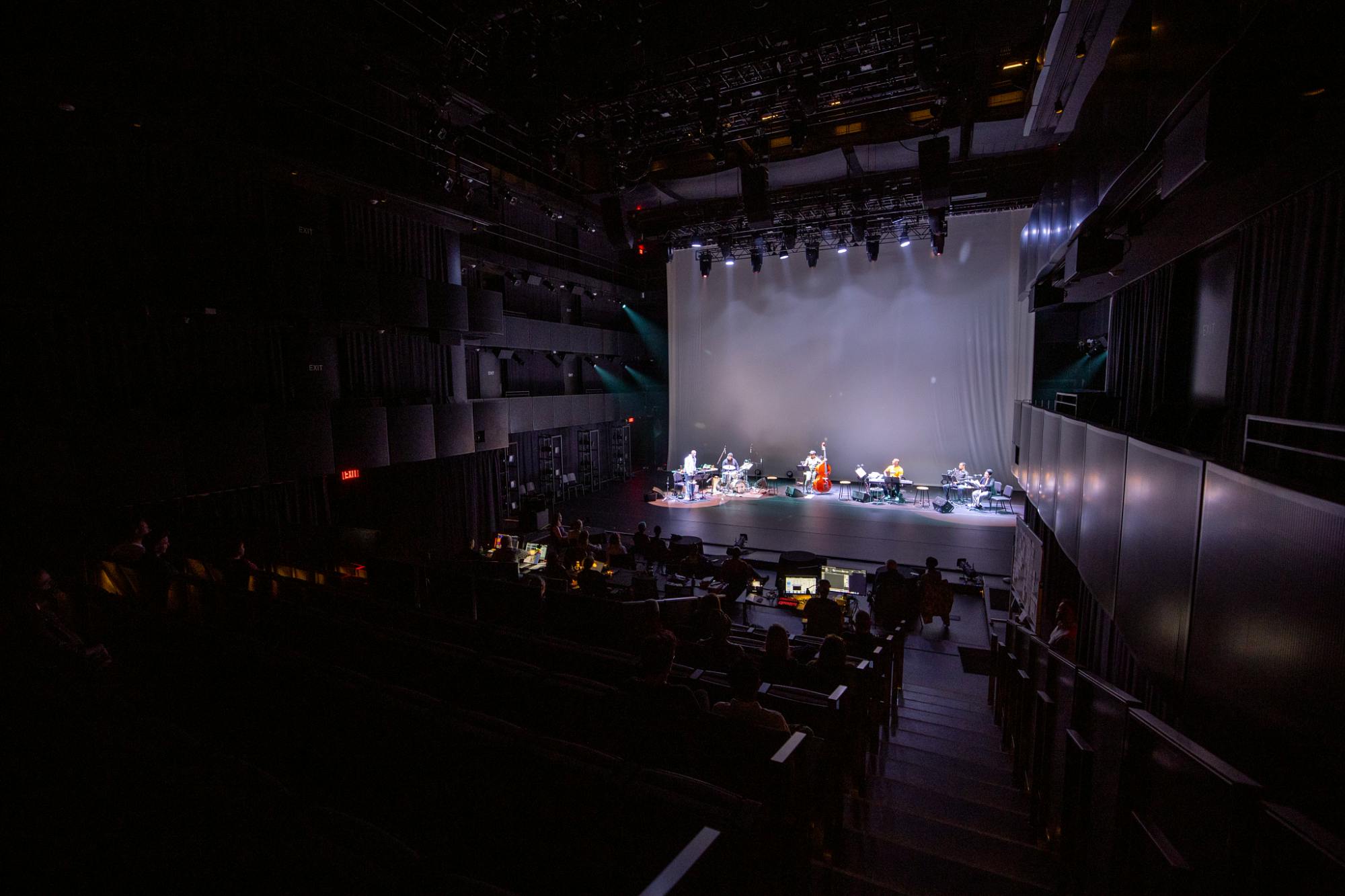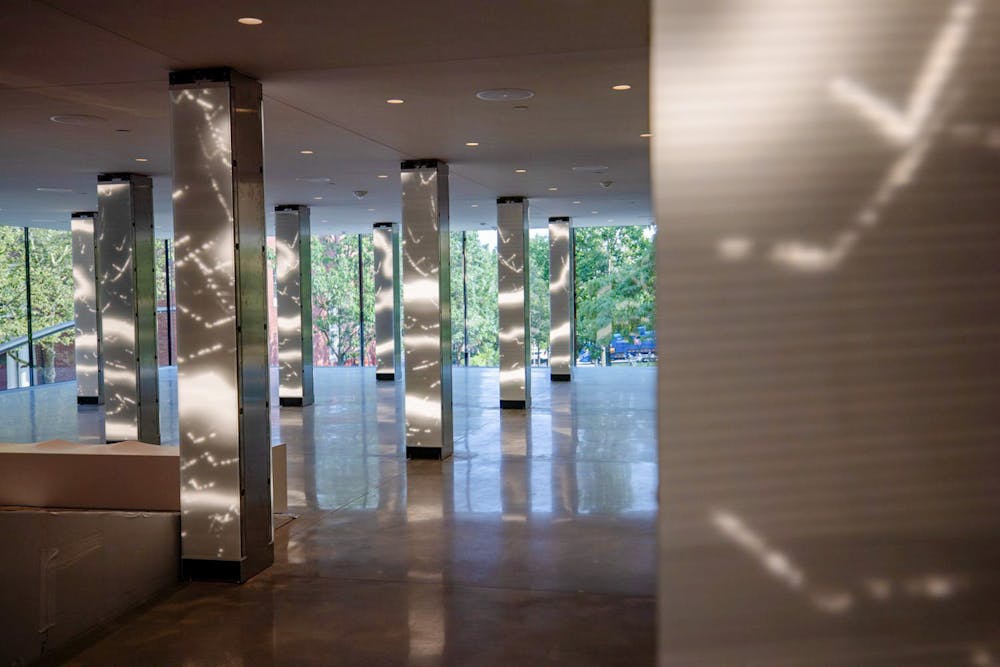With the fall semester in full swing, some students are finding themselves in class settings far different than the familiar rooms of Sayles Hall, Salomon Center and Page-Robinson Hall. With its spaces currently being used for rehearsals and classes, as well as a kickoff concert right around the corner, the Lindemann Performing Arts Center is just about open for business.
Although construction of the Lindemann was nearly complete at the end of last spring, much work still remained to be done over the summer, according to Avery Willis Hoffman, artistic director of the Brown Arts Institute. The past few months have been dedicated to testing the Main Hall’s various configurations, developing room reservation software and finalizing construction tasks, such as the installation of Leo Villareal's “Infinite Composition” in the Atwater Lobby.
Testing the Main Hall
The Lindemann’s Main Hall is a reconfigurable space: It has retractable seats, a mobile stage and moving walls that allow the Hall to be arranged in a total of five distinct ways, The Herald previously reported.
“It’s a chameleon of a building,” said Peter Chenot, director of marketing and communications at BAI. “It reflects each different event.”
In the spring, BAI tested the Main Hall’s orchestra configuration through practice rehearsals with the Brown University Orchestra and Brown University Chorus.

Over the summer, BAI worked with the Artistic Innovators Collective’s Urban Bush Women dance ensemble and artist Sabine Theunissen’s “White Box” residency to test the “acoustics and technical capabilities” of the Main Hall’s theatrical configuration, Hoffman wrote in an email to The Herald.
BAI also partnered with Brown’s Music Department and RISD’s Studio for Research in Sound and Technology to test the Main Hall’s ambisonic cube configuration. According to Chenot, the cube configuration uses about 40 speakers.

This past Wednesday, the BAI held its final major tuning event, which involved testing the flat floor configuration of the Main Hall. The performance featured Artistic Innovator Chachi Carvalho and Cape Verdean-Dutch musician Nelson Freitas, Hoffman wrote.
Throughout the testing process, Brown and Providence community members were invited in as audience members. “Surveys revealed great excitement about the new space, the versatility of each configuration and … anticipation of inspiring projects to come,” Hoffman wrote.
Lindemann in use
The Lindemann opened for classes at the start of shopping period. Some courses being offered in the building this fall include MUSC 0642: “World Music Ensemble,” MCM 1205F: “Black Queer Diasporas,” TAPS 1342: “Ballet II” and ARTS 1006: “Playing the Villain on Camera.”
Riley Hall, the largest rehearsal space in Lindemann’s lowest level, is also the new weekly rehearsal space for the Brown University Orchestra, according to Director Mark Seto.
“It has been exciting to have the opportunity to use a new facility that was designed with the performing arts in mind,” Seto wrote in an email to The Herald. “There are many moving parts, literal and metaphorical, involved in the rollout of a new space, so there are still plenty of details we are figuring out as we get acquainted with the building.”

Oboist and orchestra member Anna Ryu ’25 said that rehearsing in Riley Hall has been somewhat of an adjustment from the spaces traditionally used by the orchestra, such as Alumnae Hall and Sayles Auditorium.
“Whenever I walk into the Lindemann, I still feel like I'm walking into an area under construction or some sterile museum where I shouldn't touch things and don't know what rooms I'm allowed to be in,” Ryu said. “But I think I also trust that this new space will become familiar with time.”
Ryu added that she’s particularly excited to see friends and family in the audience this year, made possible by the slanted seating arrangement of the Main Hall’s orchestra configuration.
“It really does make a difference to me when I can see people's faces as I play in a performance,” she said. “I feel like I can play towards something or for someone.”
Student musicians have additionally been able to store their instruments and reserve practice rooms in the Lindemann. Scheduling software that allows students, student groups and faculty to book these spaces went online this week.
Chenot added that some of the Lindemann’s larger spaces, such as the Movement Lab, will likely not be available for reservation in the scheduling portal until later in the semester.
Upcoming events
Hoffman described the Main Hall as a “collaboratively curated space.” She wrote that the BAI will be working with student groups to prepare projects, such as orchestra performances, in addition to larger student performances, which will be announced as part of the inaugural IGNITE series, which aims to showcase projects from across the “Brown Arts ecosystem.”
On Saturday, Sep. 23, the Lindemann will host a Labor Appreciation Event for the many people responsible for its construction and design, Hoffman wrote. Students and community members who are still looking to get involved in the maintenance and daily operations of the new building may also apply to be a part of the BAI’s ArtsCorps workforce program.
The Lindemann’s official opening will take place on Oct. 21, with a block party, tours, public conversations and public performances by the Brown University Orchestra, Brown University Chorus and special guest violinist Itzhak Perlman P’92, Hoffman wrote.
“Student ensembles will also premiere a newly commissioned piece by the Brown Arts Institute, composed by Associate Professor of Music Eric Nathan and set to poetry written by Assistant Professor of Literary Arts Sawako Nakayasu,” she added.
After the Lindemann’s official public opening, Carrie Mae Weems’s “Varying Shades of Brown” will be set up as the inaugural project in the building. According to Chenot, portions of the installation are already on view in various sites on campus, such as the Granoff Center for the Creative Arts and List Art Center.
“Collaborative curation takes time and intention,” Hoffman wrote. “We are excited to work with students to build their skills for presenting in this large, complex space.”

Rya is an Arts & Culture editor from Albany, NY. She is a senior studying English and Literary Arts, and her favorite TV show is Breaking Bad.





